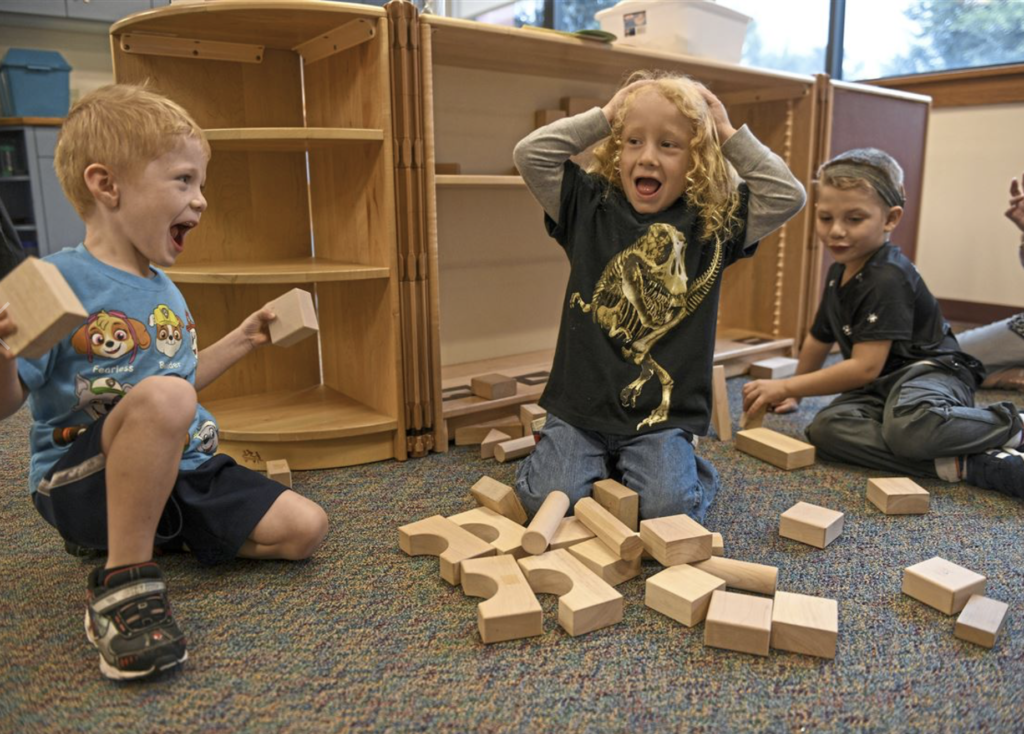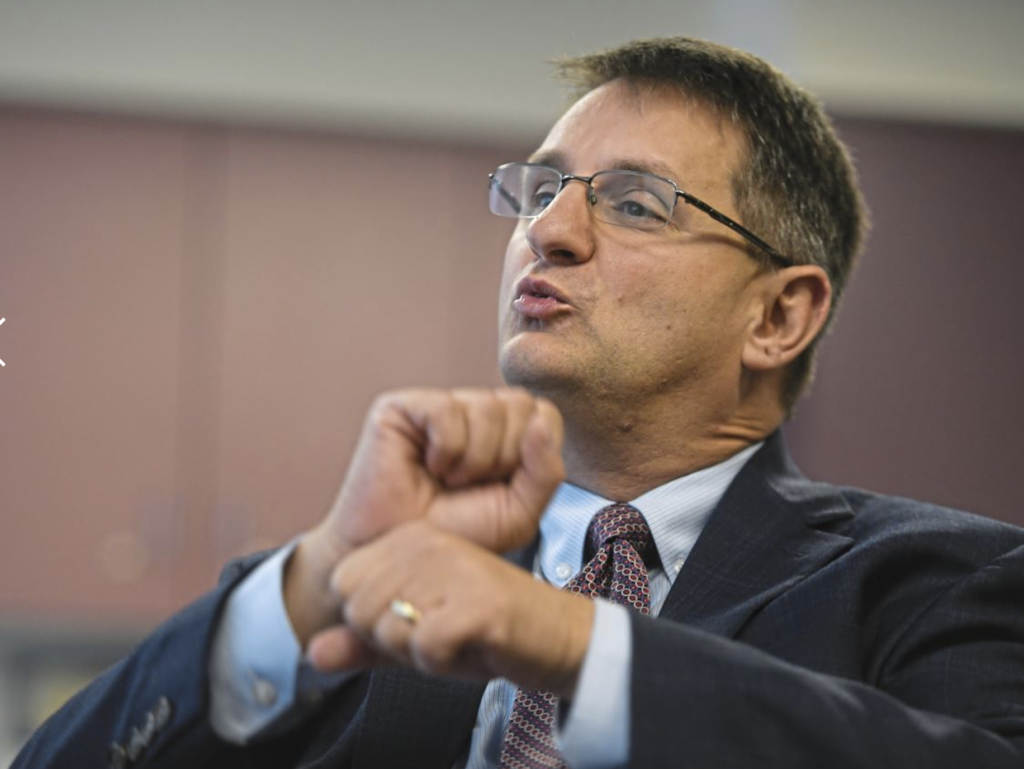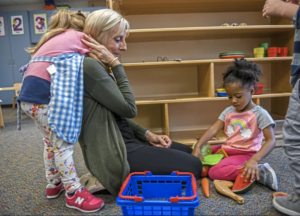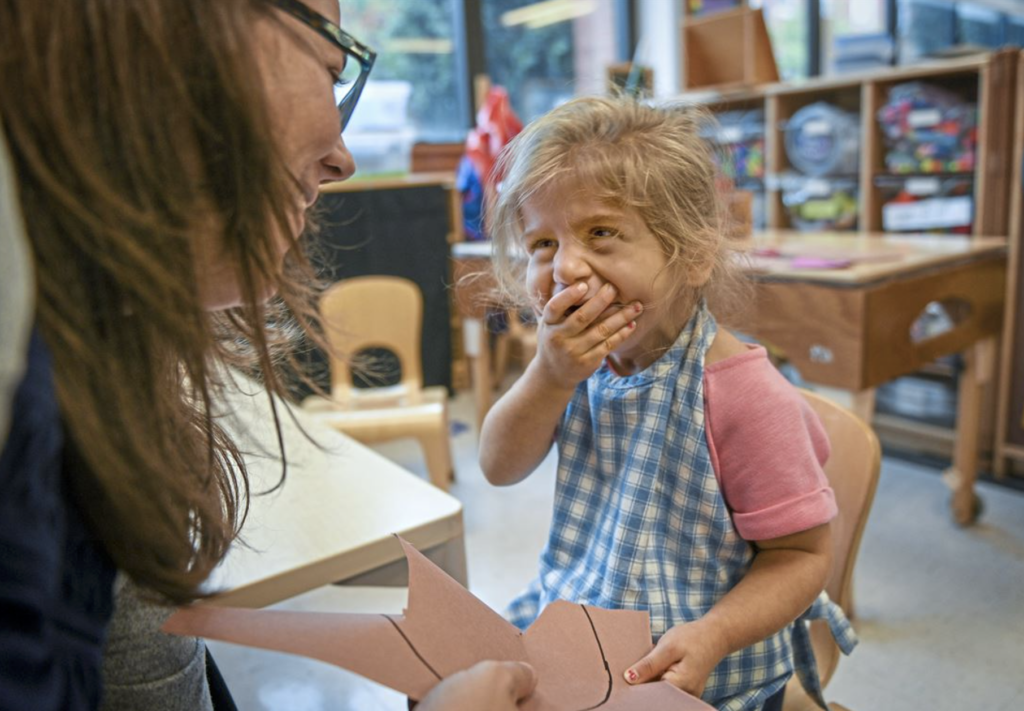
Take the scenario a step further and imagine you have no way to tell relatives your thoughts, feelings or needs.
That’s what it’s always like for young children who are deaf.
About two to three children out of every 1,000 in the U.S. are born with a detectable level of hearing loss in one or both ears, according to the National Institutes of Health.
More than 90 percent of deaf children are born to “hearing parents.” That means the vast majority of those mothers and fathers do not know American Sign Language and have no effective way to communicate with their deaf children.
The moment is “magical” when very young children who are deaf or hard of hearing realize they have learned to communicate with family, friends and classmates, said Steven E. Farmer, CEO of the Western Pennsylvania School for the Deaf in Edgewood.
Magical moments happen every day for the 40 children — 3- to 6-years-old — who attend WPSD’s Children’s Center.
The children’s center is expanding to keep pace with steadily increasing enrollment. The $2 million construction project will start in October and should be completed by spring.
The school is converting 10,000 square feet of former dormitories into classrooms, an art room, a mini-theater, an ASL classroom and a multipurpose space.
Other therapeutic support services based in different buildings on the 21-acre campus will be moved into the expanded center, making it a one-stop-shop for families .

The school has a $175,000 grant from the Redevelopment Authority of Allegheny County to help with the improvements and is doing other fundraising to cover remaining costs.
The 149-year-old Western Pennsylvania School for the Deaf teaches students through 12th grade and up to age 21.
The children’s center is an intensive program that teaches reading and other regular preschool subjects, as well as communication skills for 3- to 6-year-old children. Each week they attend classes from 8 a.m. to 3 p.m. Monday through Thursday, and a half-day on Fridays.
For younger children — newborns and those up to 3 years old — the staff makes home visits because early intervention boosts the rate of positive outcomes.
When the expansion project is completed, eight students from WPSD’s Children’s House will move into the space and become part of the children’s center.
Children’s House is a Montessori-based oral preschool. Five of the students can hear, but all eight have a connection to hearing loss. Some are children of deaf adults or siblings of WPSD students. Some are childen of staff.
The children’s center staff of eight teachers, nine aides, two speech/language pathologists and therapists — occupational, physical and vision — all use American Sign Language. Some are deaf, others are not. Most students and their parents choose to learn ASL. Some children learn how to speak and at least one uses an IPad to communicate.

“It’s critical that we work with parents,” including offering them class instruction in ASL, Mr. Farmer said. He uses ASL in interviews and meetings and his interpreter, Josh Waterhouse, translates.
Mr. Farmer was born, profoundly deaf, 50 years ago, in a hearing family. Growing up in Maryland, for several years he attended a school for the deaf, but graduated from a public high school. He was the only deaf student, “and that can be lonely,” he said.
He used ASL and interpreters in college, where he earned bachelor, master’s and Ph.D. degrees.
The children’s center is a happy place, with smiling children and cheerfully-bright walls, furniture and rugs. There are fish tanks, lots of toys and child-sized playhouses.
During lunch and recess the center rings with laughter. Children who have learned to speak are happy to share the highlights of their day with Carrie Rain, director of early childhood programs.
Popular with parents and children is Christie Homell, who teaches ASL at the children’s center.
“I have experienced what my students have experienced. I am deaf,” Ms. Homell said, speaking through interpreter Amy Dent. “Growing up I was frustrated. I was mainstreamed” in public schools for a while “and that was a challenge. There were very few deaf students.”
When she enrolled in WPSD as a boarding student in sixth grade, “I fell in love. I did not know so many kids were deaf,” said Ms. Homell, who has worked at WPSD for 19 years because “I love this place and I care a lot about the kids.”
The Western Pennsylvania School for the Deaf is a nonprofit, tuition-free school, which means parents pay nothing. Pre-school students are funded by the state. A percentage of K-12 is paid by the state and a percentage is paid by students’ school districts.
Link Source article
Linda Wilson Fuoco: lfuoco@post-gazette.com or 412-263-1953.
